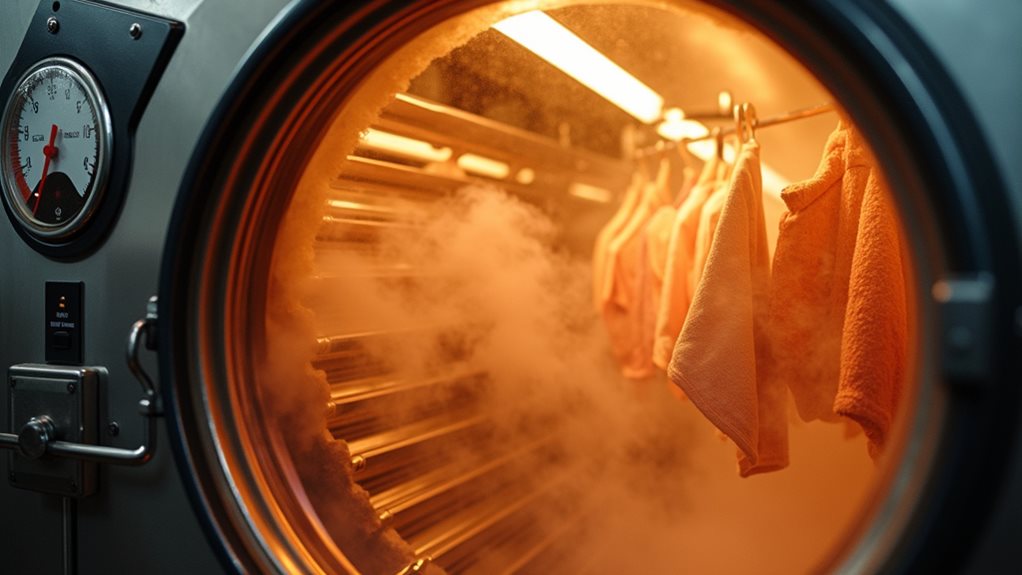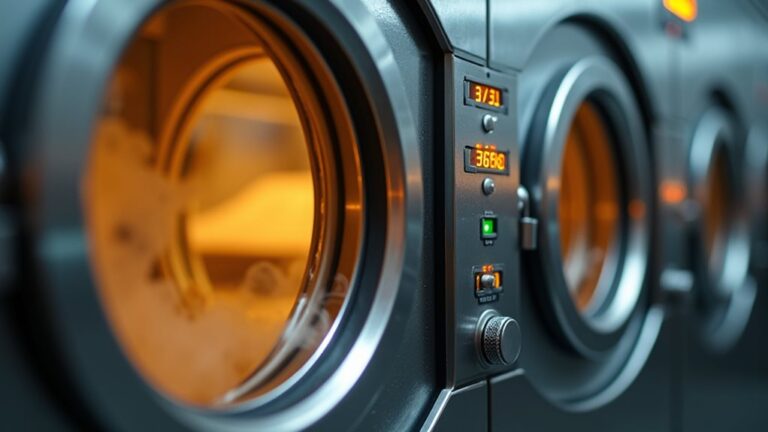You’ll find that dry cleaning operates surprisingly cool, with solvents working at just 68-86°F during the actual cleaning process—that’s cooler than your washing machine’s warm cycle! While I used to think “dry cleaning” meant scorching heat, the real temperature action happens later during drying (140-145°F) and pressing (176-248°F), where steam and warm air restore your garments. Understanding these temperature phases reveals why certain fabrics thrive under professional care.
Temperature Ranges in Professional Dry Cleaning Operations
While most people assume dry cleaning involves scorching temperatures that could fry an egg, the reality is surprisingly gentle, and I learned this the hard way when I accidentally grabbed a freshly “cleaned” silk blouse from my local cleaner, expecting to burn my fingers.
The dry cleaning process actually operates at surprisingly low temperatures, with solvent temperatures ranging between just 20°C to 30°C during the cleaning cycle.
Professional dry cleaning facilities use perc and other cleaning solvents that work effectively without extreme heat, protecting your delicate fabrics from damage.
Professional dry cleaners rely on specialized solvents that clean effectively at low temperatures, keeping your most delicate garments safe from heat damage.
Modern dry cleaning alternatives like liquid CO2 operate even cooler, making the entire process safer for both your clothes and the environment – who knew gentle could be so effective? 😊
These moderate temperatures are specifically designed to maintain fabric integrity while achieving thorough cleaning results across different garment types.
How Solvent Temperature Affects Fabric Care and Cleaning Performance

When my favorite cashmere sweater came back from the dry cleaner looking like it belonged to my toddler nephew, I realized I’d learned a harsh lesson about why solvent temperature matters so much in fabric care.
You see, when chemical solvents get too hot during the cleaning process, delicate fabrics become vulnerable to color bleeding and fabric distortion that’ll break your heart 💔.
Professional cleaners maintain solvent temperature at 30°C or lower specifically to protect garment integrity while still achieving effective stain removal.
The magic happens when controlled temperature control combines with mechanical friction, creating the perfect environment for cleaning without damage.
Modern dry cleaning machines use specialized solvents like perchloroethylene or eco-friendly alternatives that circulate through the fabric to lift dirt and stains without water damage.
Trust me, understanding this balance between cleaning performance and fabric protection will save you from my sweater-shrinking nightmare.
Comparing Heat Levels: Dry Cleaning Vs Traditional Water Washing
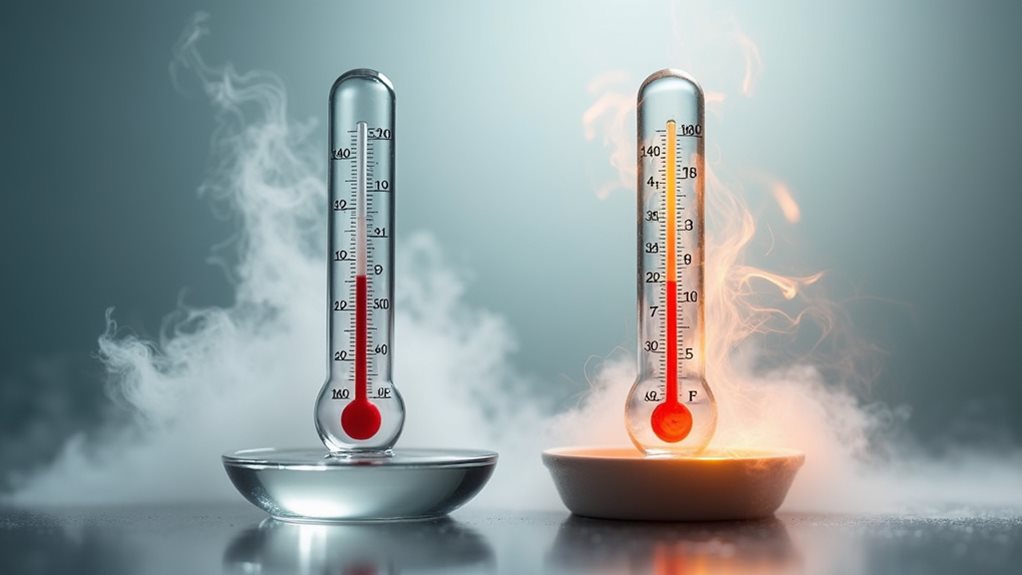
After watching my dry cleaner work their magic on that poor cashmere sweater, I started wondering how their heat levels actually stack up against my trusty washing machine at home, and honestly, the differences surprised me more than finding a twenty-dollar bill in an old coat pocket 😊.
While your water washing routine cranks up temperatures between 40-60°C, dry cleaning keeps things surprisingly chill at 30°C or lower during the cleaning process.
Dry cleaning’s surprisingly cool 30°C temperatures protect delicate fabrics while your home washer blasts them with scorching 40-60°C heat.
This temperature control makes all the difference for delicate fabrics that would otherwise face shrinkage or distortion.
The real heat comes during drying, when solvent temperatures reach 60-63°C to evaporate cleaners without compromising fabric integrity.
This careful balance in heat levels explains why dry cleaning excels at garment care for your most precious pieces.
These controlled temperatures also prevent color bleeding in garments, which is a common concern when cleaning items like silk blouses or wool suits that contain multiple dyes.
The Role of Temperature in Different Dry Cleaning Solvents
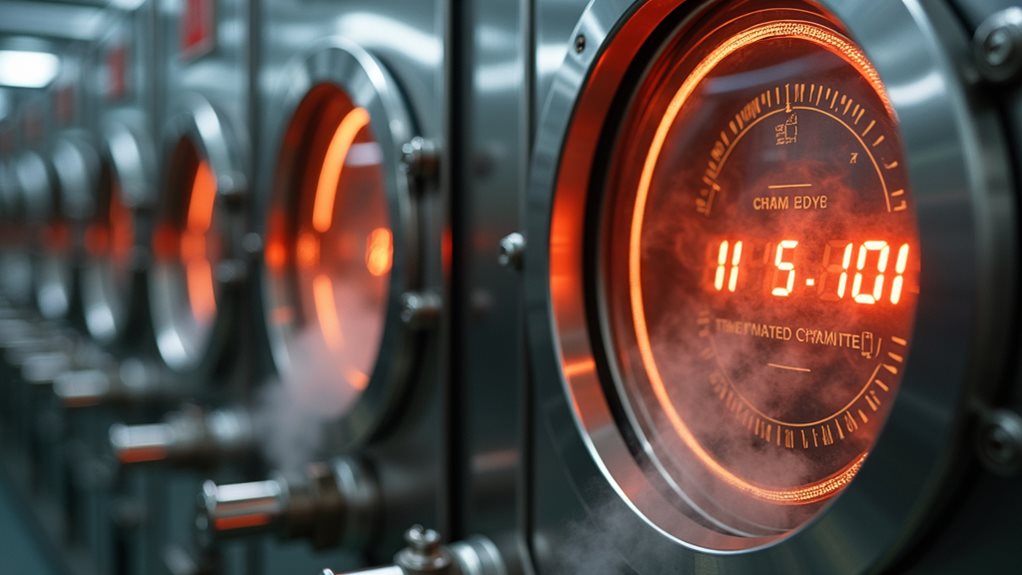
Since different solvents behave like unique personalities at a dinner party, each one requires its own special temperature treatment to perform at its best. Understanding these quirky relationships has honestly saved me from more wardrobe disasters than I care to admit 😅.
Perchloroethylene, the workhorse of dry cleaning solvents, thrives at surprisingly low temperatures around 30°C, protecting your delicate fabrics from unnecessary stress while still dissolving stubborn stains effectively.
Alternative solvents like liquid CO2 and high flash hydrocarbons also prefer cooler cleaning process temperatures, preventing color bleeding and fabric shrinkage that could ruin your favorite pieces.
However, when it comes to drying, these same gentle solvents need warm air temperatures reaching 60-63°C to evaporate completely, preserving your garment’s integrity.
For environmentally conscious consumers, GreenEarth silicone-based solutions offer an eco-friendly alternative that operates at similarly gentle temperatures while providing excellent cleaning results without the environmental concerns of traditional solvents.
Heat Application During the Drying and Pressing Phases
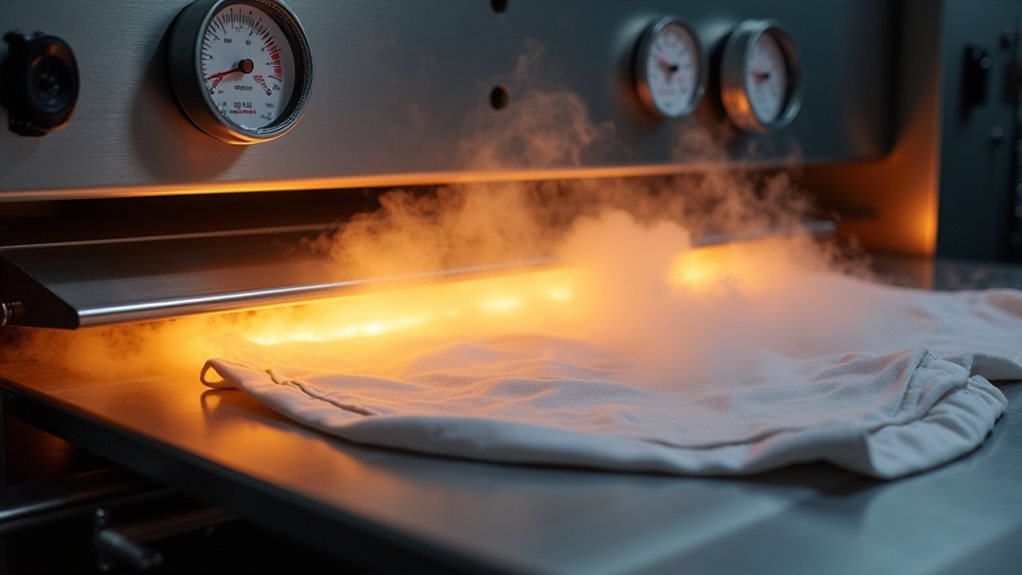
While the gentle cleaning phase treats your clothes like they’re relaxing in a spa, the drying phase and pressing phase turn up the heat considerably, and I’ve learned through countless trips to my local cleaner that this is where the real magic happens.
During the drying phase, your garments tumble in warm air reaching 140°F to 145°F, effectively evaporating any residual solvent while protecting delicate fabrics from distortion.
The pressing phase cranks things up even more, with steam application hitting temperatures between 176°F to 248°F to relax fibers and eliminate stubborn wrinkles.
The pressing phase unleashes intense steam heat up to 248°F, transforming stubborn wrinkles into perfectly smooth fabric through precise fiber relaxation.
What impressed me most is how precise temperature control guarantees fabric integrity remains intact, preventing damage to sensitive materials like silk while maintaining exceptional garment quality throughout the entire dry cleaning process.
This careful heat management is crucial because dry cleaning uses specialized solvents like perchloroethylene or eco-friendly alternatives that require specific temperature ranges for optimal solvent extraction and garment restoration.

